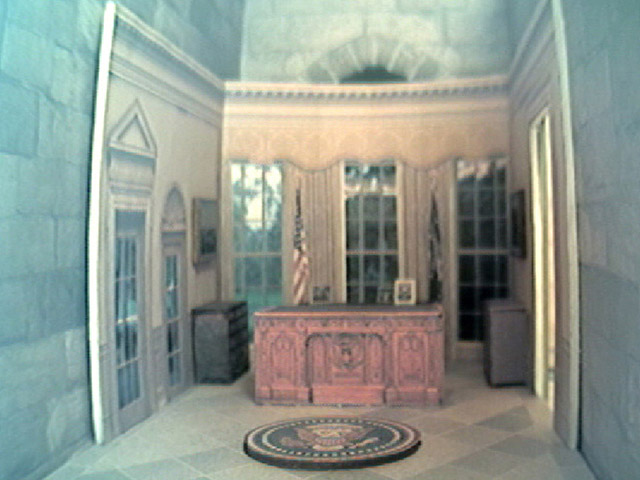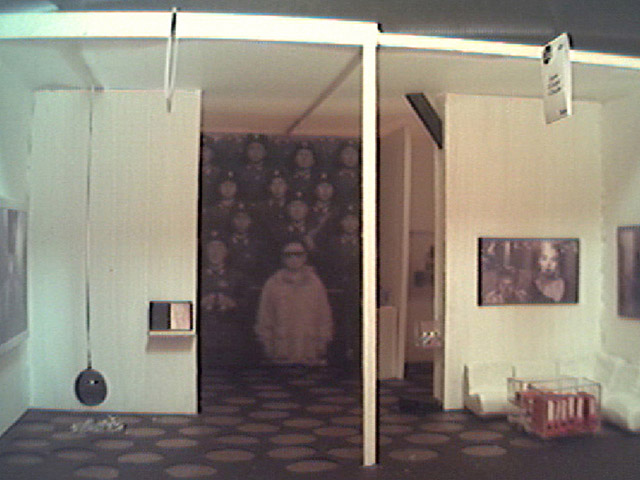|
Wooden crates, scale models, mini video cameras and video screens. Black Box (Oval Office / Albi / Biennale / Fiac 2006 / Incipit / Cosmic), 45 X 34 X 31 cm Black Box (Studio / Fiac 2008 / Inauguration), 60 X 45 X 41 cm Series initiated in 2007 The Black boxes where first shown during Lyon's biennial in 2007. One of them is part of the collection of FNAC (Fond National d'Art Contemporain).
The project called Black boxes consists in a series of wooden crates containing some scale models of various exhibitions I participated in since 2006. The crates are closed so the models are not visible directly but some on-board mini video cameras show us their image in real time on some screens. Each Black box can be seen as a miniaturized movie studio including a set, a video camera and a lightning system.
Back to top
|
|
|









